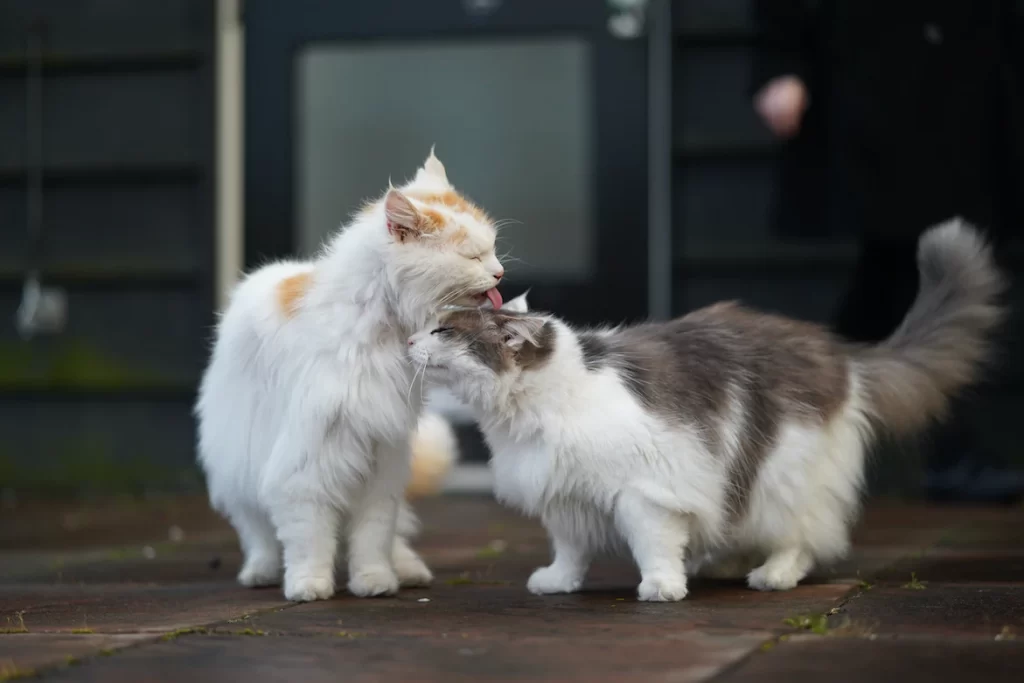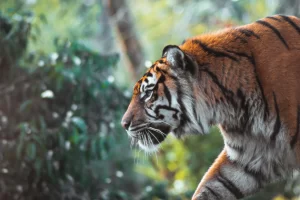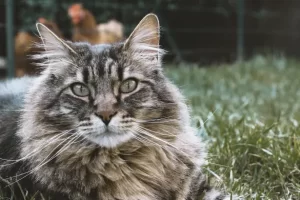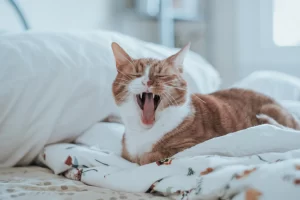
Introduction
Do Cats mate with their siblings? Cats mating with their siblings is an interesting and often debated topic in the animal kingdom. While occasionally, it may occur between two cats who share a parent, this should be avoided when breeding due to the potential for health issues and even deformities. In most cases, cat adults from different litters are the preferred choice for mating and ensure that subsequent offspring will be of higher quality. Understanding cat genetics through an in-depth search of pedigree records can help owners decide how best to produce healthy, strong cats in the future.
Genetic and biological factors that determine whether cats can mate with their siblings
One of the fascinating aspects of cats is the adaptability in their breeding. While some animals are severely restricted genetically to who they can mate with, cats are unique in that the rules can be overridden if given certain biological factors. The major factors regulating whether cats can mate with their siblings include genetic irregularities, reproductive isolation levels, and specific relationship dynamics. If these conditions are met, two cats from the same family line can breed without adversely affecting the litter. According to VCA Hospitals, cats generally have a high degree of genetic relatedness due to their small population size and limited gene flow. This means they are more likely to share genetic traits, including those that determine reproductive compatibility.
However, cats also have many genetic and biological mechanisms that prevent them from mating with close relatives. One of these mechanisms is called inbreeding depression, which is the fitness reduction resulting from breeding between closely related individuals. This can manifest in various ways, including reduced fertility, increased susceptibility to diseases, and developmental abnormalities.
Another mechanism is a genetic switch called the major histocompatibility complex (MHC), which plays a crucial role in the cat’s immune system. MHC genes are responsible for recognizing and responding to pathogens, and they vary greatly between individuals. Cats with similar MHC profiles are less likely to breed together, as their offspring may have a weaker immune system.
Cats have genetic and biological factors that can prevent them from mating with their siblings, although inbreeding depression and MHC are the most common. Inbreeding is not recommended, and it’s always better to breed cats from different lines to avoid potential genetic problems.
Risks and potential issues associated with inbreeding
Some of the risks and potential issues associated with inbreeding in cats include:
- Reduced fertility: Inbreeding can lead to a decline in fertility and an increased risk of reproductive problems such as infertility, miscarriage, and stillbirth.
- Increased susceptibility to diseases: Inbreeding can increase the expression of deleterious recessive genes, leading to an increased risk of inherited diseases and disorders. Such diseases may include congenital heart defects, immune system disorders, and genetic diseases.
- Developmental abnormalities: Inbreeding can also increase the risk of abnormalities such as cleft palate, missing teeth, and malformed bones.
- Reduced viability and survival: Inbred cats may have a lower chance of survival in the womb or shortly after birth.
- Decreased heterozygosity: Inbreeding decreases genetic diversity, which reduces the population’s ability to adapt to changing environmental conditions and increases the risk of extinction.
- Decreased physical fitness: Inbreeding can lead to a decline in overall physical fitness, including reduced growth rate, body size, and overall health.
It’s important to note that inbreeding should be avoided as much as possible, as the negative effects can be severe and long-lasting. Breeding cats from different lines is always better to avoid potential genetic problems and promote genetic diversity.
Factors that influence cats’ mating choices
Several factors can influence a cat’s mating choices. Some of the most important factors include the following:
- Hormonal state: Cats have a seasonal breeding pattern, with females coming into heat during specific times of the year. Hormones control this, and a female cat will only be receptive to mating when she is in heat.
- Social status: Cats are territorial animals, and their social status within a group can influence their mating choices. Dominant males will have a greater opportunity to mate with females, while subordinate males may have less success.
- Physical characteristics: Cats have specific physical characteristics, such as coat color, pattern, and body shape, that can influence their mating choices. Some cats may prefer partners with specific physical traits.
- Genetic compatibility: Cats have a genetic switch called the major histocompatibility complex (MHC), which plays a crucial role in the cat’s immune system. According to (Dr. Marie Kerl, Chief Medical Officer), MHC genes are responsible for recognizing and responding to pathogens, and they vary greatly between individuals. Cats with dissimilar MHC profiles are more likely to breed together, as their offspring may have a stronger immune system.
- Environmental factors: Cats’ mating choices can also be influenced by environmental factors such as food availability and the presence of other cats.
- Past experiences: Past experiences can play a role in cats’ mating choices. Cats that have had positive experiences with certain individuals may be more likely to mate with them again.
Overall, it’s a complex process, and various factors can influence cats’ mating choices. Some factors are under the cat’s control while others are not, making it a dynamic process.
How common is it for cats to mate with their siblings in the wild vs. in captivity?
It is relatively uncommon for cats to mate with their siblings in the wild. This is because wild cats have a large population size and a high degree of gene flow, which increases the chances of mating with a non-sibling. In addition, wild cats are territorial animals and tend to live in small groups or alone, which reduces the likelihood of siblings coming into contact with one another.
In contrast, inbreeding is more common in captive populations of cats. This is because captive populations are usually smaller and have limited gene flow, which increases the chances of mating with a close relative. Additionally, captive cats are often housed in close proximity to one another, which increases the likelihood of siblings coming into contact with one another.
Captive breeding programs should avoid inbreeding by carefully selecting breeding pairs that are not closely related and introducing new individuals into the population through adoption or rescue. This will help to promote genetic diversity and ensure the health and well-being of the cats in captivity.
Impact of cat inbreeding on the overall population and genetic diversity of cats
In-breeding in cats can have a number of negative impacts on the overall population and genetic diversity of cats. Some of the most significant impacts include:
- Reduced population size: Inbreeding can lead to a decline in fertility and an increased risk of reproductive problems such as infertility, miscarriage, and stillbirth. This can lead to a decrease in the overall population size of cats.
- Decreased genetic diversity: Inbreeding decreases genetic diversity, which reduces the population’s ability to adapt to changing environmental conditions and increases the risk of extinction. Genetic diversity is the raw material for natural selection; the more genetic diversity, the more the population can adapt to new conditions.
- Increased susceptibility to diseases: Inbreeding can increase the expression of deleterious recessive genes, leading to an increased risk of inherited diseases and disorders. This can lead to a decrease in the overall health and fitness of cats in the population.
- Developmental abnormalities: Inbreeding can also increase the risk of abnormalities such as cleft palate or malformed bones. This can lead to a decrease in the overall health and fitness of cats in the population.
- Reduced viability and survival: Inbred cats may have a lower chance of survival in the womb or shortly after birth. This can lead to a decrease in the overall population size of cats.
How to prevent cats from mating with their siblings?
There are several steps that can be taken to prevent cats from mating with their siblings. These include:
- Ensuring cats are spayed or neutered when appropriate. This is the most effective way to prevent cats from mating with their siblings. According to Pet MD, it involves surgically removing the reproductive organs of the cat, which prevents them from being able to reproduce.
- Introducing new individuals into the population through adoption or rescue to promote genetic diversity and reduce inbreeding. This can be done through shelters and rescue organizations that specialize in finding homes for cats with unknown parentage.
- Housing cats separately to reduce the likelihood of siblings contacting one another. This can be done by housing cats in different enclosures or rooms and providing plenty of stimulation and opportunities for play to keep them busy.
- Carefully selecting breeding pairs that are not closely related to reduce the chances of inbreeding. This will help to promote genetic diversity and ensure the health and well-being of the cats.
- Keeping the population size at a manageable level to maintain genetic diversity and health. This can be done by limiting the number of cats in a population or removing individuals if the population size gets too large.
Conclusion
The topic of cat inbreeding is complex, and several steps need to be taken to reduce the risk of inbreeding. Knowing the various impacts of inbreeding on the overall population and genetic diversity, it is important to take steps to reduce the chances of cats mating with their siblings.


